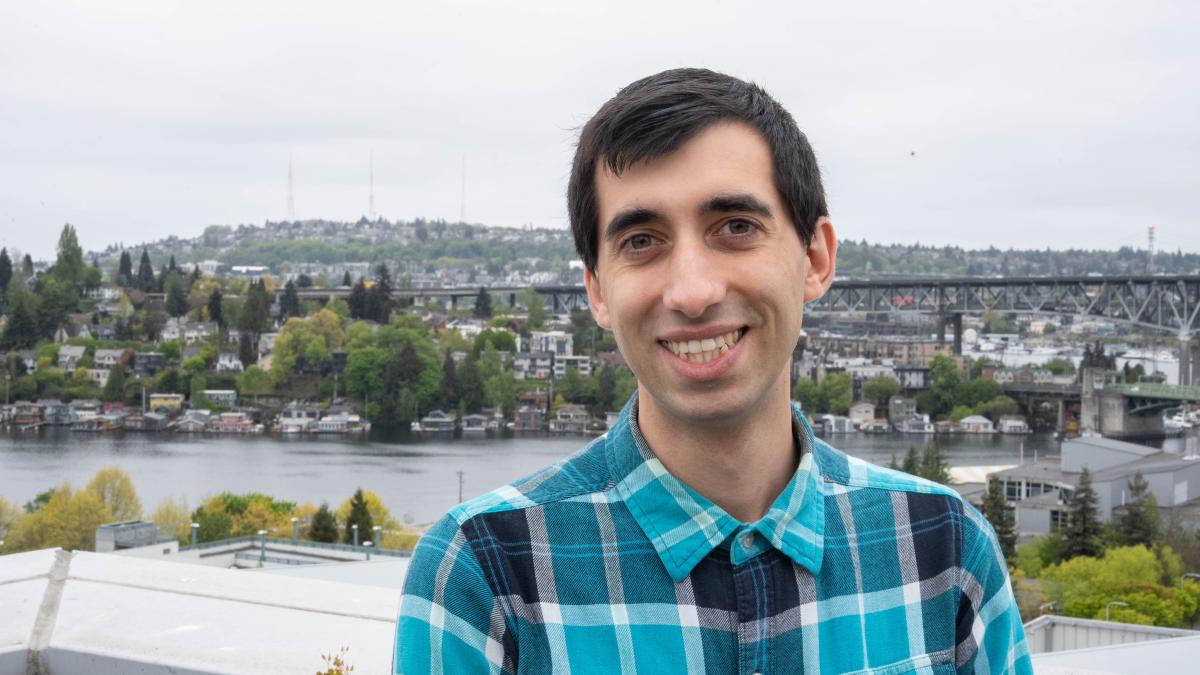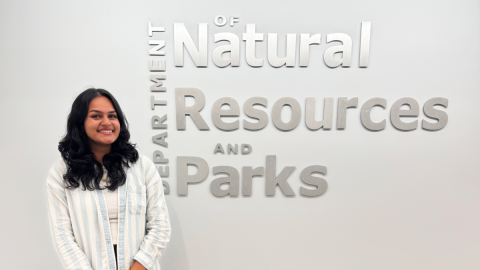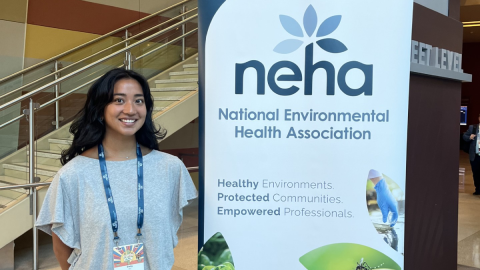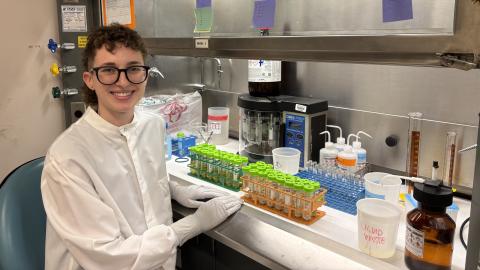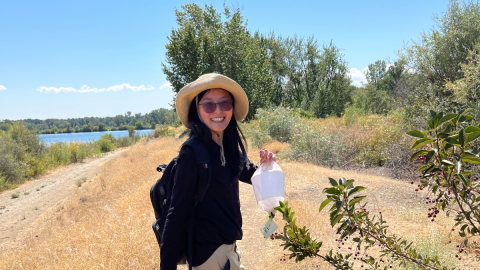Joey Teresi
MS, Environmental Health Sciences
Hometown
Channahon, IL
Future plans
An environmental health or public health career in the public sector.
“I’ve been lucky to have advisers in DEOHS that help me set lofty goals and meet those goals.”
- Joey Teresi
When Joey Teresi was in high school, he thought he’d end up as a forensic scientist — he loved TV shows like the CSI series.
But he also had an innate sense of curiosity about his environment and how the world around him worked beyond crime scene investigations. In college, he decided to pursue a dual degree in geology and environmental studies.
“I’ve always been interested in environmental hazards and how they can impact us, but growing up I didn’t realize how to translate these interests into a career path,” said Teresi, who’s now wrapping up an MS in Environmental Health Sciences in the UW Department of Environmental & Occupational Health Sciences (DEOHS). “Learning about the environment and how it impacts human health and society definitely aligns with a lot of my interests.”
Teresi was recently named the 2024 DEOHS Outstanding Master's Student for his innovative research using drones to assess toxic algal blooms in local lakes.
From consulting to community service
After he graduated from Augustana College in Rock Island, Illinois, Teresi worked for four years in Iowa and in Seattle as an environmental consultant. His work involved environmental assessments; property inspections; and conducting soil, groundwater, and air sampling to monitor for hazardous contaminants.
After his time in the private sector, Teresi realized he wanted to shift to a more public service–focused career and decided to pursue a master’s degree to help make that transition. Having moved to Seattle with his partner in 2019, he naturally looked to UW first.
“Luckily, UW has one of the best programs in the world on environmental public health,” Teresi said.
Teresi’s previous work experience helped him quickly home in on a research project and hit the ground running when he started the program, said his thesis adviser, Tania Busch Isaksen, DEOHS teaching professor and the undergraduate program coordinator.
“Joey’s past work experience translated into a deep understanding of the importance of interdisciplinary teams and the interconnectedness of human activity to environmental degradation. Given his skillset and real-world experience, Joey started his educational path with clear focus on what he wanted out of his MS degree and thesis,” Isaksen said. “I have been continually impressed by his foundational knowledge, work ethic and his commitment to water quality and understanding the associated human health impacts.”
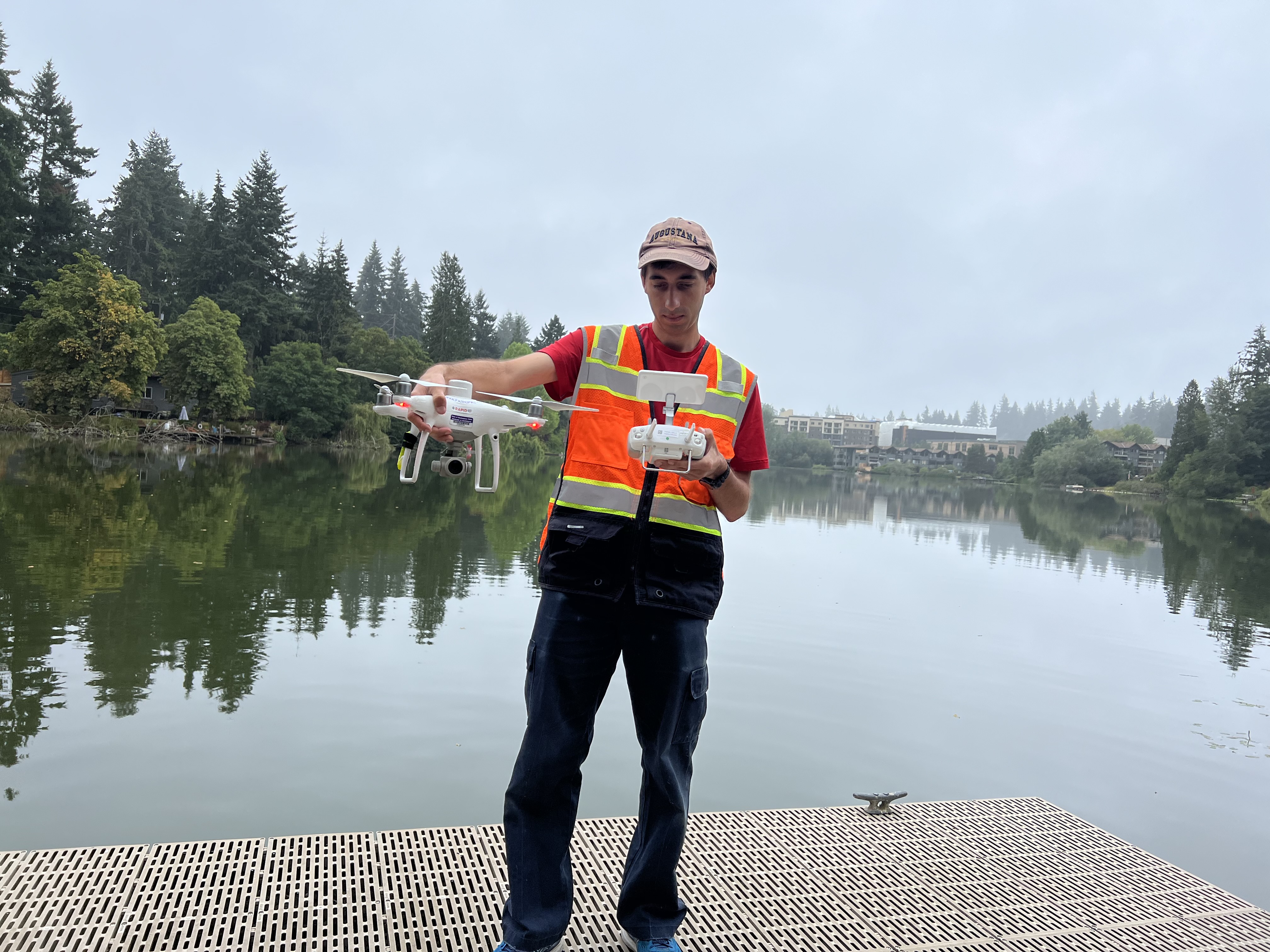
Using drones to track down algal blooms
In the summer of 2022, right before Teresi started his graduate program, he attended a conference on disasters and resilience in public health. The UW’s RAPID Facility, which supports environmental hazard and disaster research with state-of-the-art equipment and other services, gave demonstrations of several of their instruments, including their drones.
Teresi had already been considering a thesis project on water quality, and he and Isaksen started talking about whether the facility’s drones could be used to assess algal blooms.
Harmful algal blooms in freshwater are on the rise as the planet warms due to climate change, and can sometimes be difficult to detect using traditional water sampling methods, especially at early stages of the algae’s growth. These blooms can be dangerous to people or pets swimming in the lakes, and public entities need to communicate their presence to local communities to warn people to stay out of the water until the blooms dissipate.
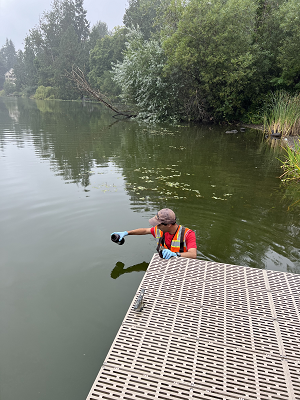
Working with Isaksen and DEOHS Professor and Associate Chair Scott Meschke, Teresi experimented with a method to automatically detect chlorophyll levels on the surface of a lake using drone imaging. The drones can’t tell if areas with more chlorophyll represent toxic or harmless algae, or some other kind of plant material, but they can provide a warning sign for lake areas that might need further testing.
Teresi carried out this work, which was funded by a Tier 1 pilot grant from the UW Population Health Initiative, at Echo Lake in Shoreline, Washington. Besides establishing that the technology could detect excess levels of chlorophyll in that lake, he also wrote a guidance document for applying the new method to other bodies of water.
Pursuing public service
After he graduates this June, Teresi hopes to find a position working for a local or state public health or environmental science department. As for the outstanding student award, he credits his advisers and other professors for helping him in his research.
“I’ve been lucky to have advisers that help me set lofty goals and meet those goals,” Teresi said. “It’s really nice to have the hard work you put in acknowledged, and I’m really humbled and appreciative of that.”
